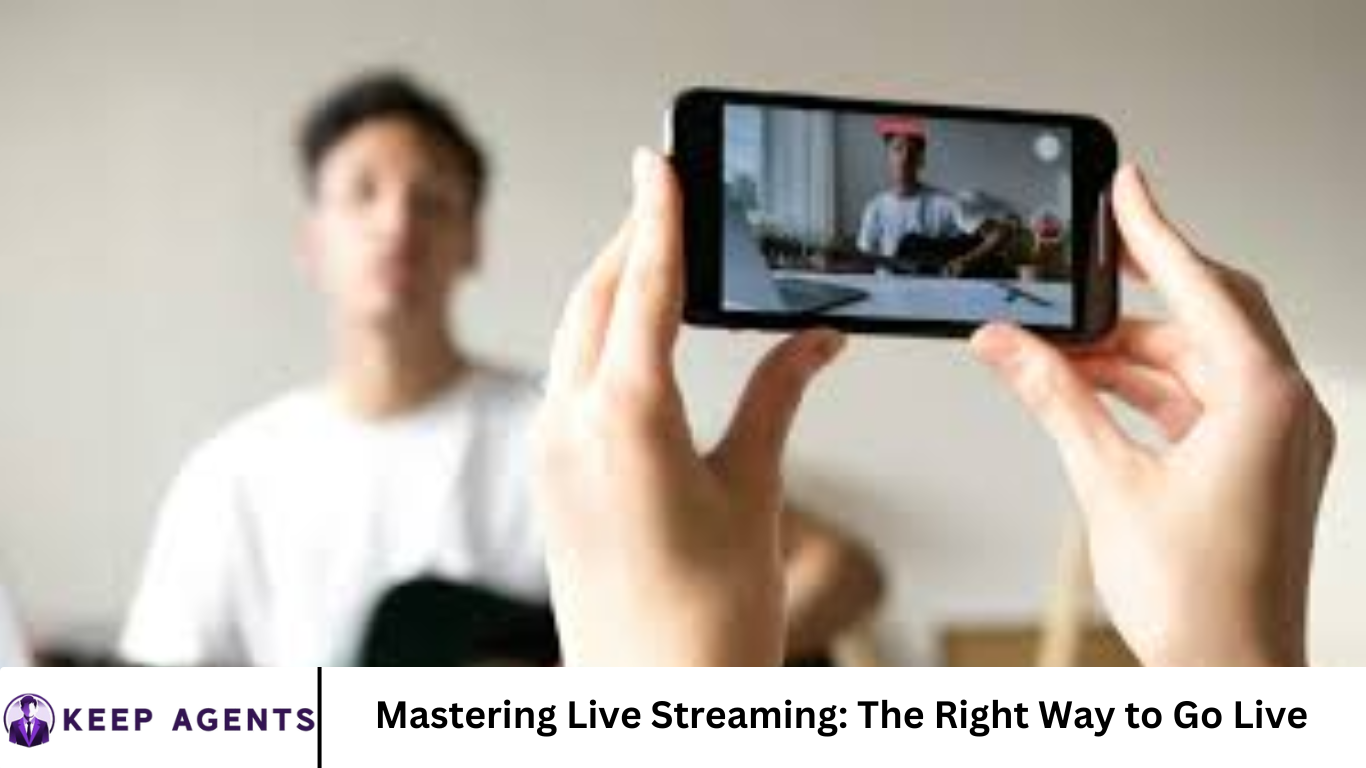Digital era, live streaming has emerged as one of the most powerful tools for communication, engagement, and brand building. Whether you’re a business hosting a virtual product launch, a musician performing for fans, or a content creator growing an online audience, live streaming opens the door to real-time connection and global reach.
But with great opportunity comes the challenge of doing it right. Poor quality streams, lagging video, or a lack of engagement can turn viewers away in seconds. So how can you ensure your live stream stands out and delivers maximum impact? This comprehensive guide will teach you how to master live streaming the right way.
More Read: Event Photography Checklist: 46 Must-Have Shots for Every Occasion
What is Live Streaming?
Live streaming is the process of broadcasting video and audio content in real time over the internet. Platforms such as YouTube Live, Facebook Live, Instagram Live, Twitch, LinkedIn Live, and others have made live streaming accessible to individuals and businesses of all sizes.
It allows for real-time interaction with audiences, making it a favorite for events, webinars, Q&As, product launches, and entertainment.
Why Live Streaming Matters More Than Ever
Since the COVID-19 pandemic, the live streaming industry has exploded. According to Upcomer, live streaming saw a 99% growth from April 2019 to April 2020. By 2026, it’s projected to become a $184.3 billion industry. This dramatic rise underscores the importance of mastering this medium.
As consumers increasingly turn to online content for education, entertainment, and communication, the ability to stream effectively becomes not just a skill but a necessity.
Benefits of Live Streaming
- Real-Time Engagement: Unlike pre-recorded videos, live streaming allows you to interact directly with your audience. Respond to questions, read comments, and acknowledge viewers in real time.
- Cost-Effective: Hosting a live event online can significantly reduce the costs associated with physical events like venue rentals, travel, and logistics.
- Wider Reach: A live stream can be accessed globally, allowing you to reach a much larger audience than a local event.
- Authenticity: Live content tends to feel more personal and authentic, which builds trust and deepens audience connection.
- Monetization Opportunities: Platforms like Twitch and YouTube offer options to monetize live streams through ads, sponsorships, and viewer donations.
Choosing the Right Platform
Different platforms serve different purposes. Choosing the right one depends on your target audience and the type of content you plan to share.
- YouTube Live: Great for webinars, product demonstrations, and entertainment.
- Facebook Live: Ideal for community engagement and brand awareness.
- Instagram Live: Perfect for casual, behind-the-scenes content and influencer marketing.
- Twitch: Popular among gamers and creatives.
- LinkedIn Live: Best for B2B communications, thought leadership, and professional events.
Make sure to research your audience’s platform preferences before committing.
Pre-Production: Planning Your Live Stream
Proper planning is the foundation of a successful live stream. Here’s what to consider:
1. Define Your Objective
Are you looking to educate, entertain, promote a product, or build community? Your goal will guide every other decision.
2. Know Your Audience
Tailor your content, language, and delivery to your target viewers. Understanding their needs and preferences will help you keep them engaged.
3. Script and Outline
Even if you want a casual vibe, having a basic script or outline helps maintain flow and ensures you cover key points.
4. Choose the Right Equipment
- Camera: Use a high-definition webcam or DSLR for better quality.
- Microphone: Invest in a good external mic to ensure clear audio.
- Lighting: Use softbox lights or ring lights to brighten your scene.
- Internet Connection: A wired connection is preferable. Aim for at least 5 Mbps upload speed.
5. Rehearse
Do a test run to check video, audio, and internet stability. This will help you identify and fix potential problems.
Going Live: Best Practices
1. Promote Your Stream
Use social media, email newsletters, and your website to build anticipation. Send reminders as the event approaches.
2. Start On Time
Respect your viewers’ time. Starting promptly signals professionalism and builds trust.
3. Engage Your Audience
Welcome new viewers, ask questions, and encourage comments. Use their names when responding to create a personalized experience.
4. Use Visuals and Graphics
Incorporate banners, lower thirds, and on-screen prompts to highlight key information and keep things visually interesting.
5. Monitor Live Chat
Assign a team member to moderate the chat and assist with questions or issues. This ensures a smooth and interactive experience.
Post-Production: After the Stream Ends
Your live stream doesn’t end when you hit “stop.” There are several post-event actions you should take to maximize your efforts.
1. Repurpose Content
Edit the recording into smaller clips for social media. Turn key takeaways into blog posts, infographics, or email content.
2. Analyze Performance
Use analytics tools to measure viewer engagement, peak viewership times, and drop-off points. Platforms like YouTube and Facebook offer detailed metrics.
3. Follow Up With Your Audience
Send thank-you emails, share the replay link, and solicit feedback to improve future streams.
Common Mistakes to Avoid
- Poor Audio Quality: Bad sound is one of the quickest ways to lose viewers. Always use an external mic.
- Ignoring the Audience: Live streaming is about interaction. Don’t treat it like a one-way broadcast.
- Overlooking Promotion: Even the best stream will fail if no one knows about it. Promote it well in advance.
- Technical Glitches: Always do a tech rehearsal. Invest in reliable equipment.
- Lack of Clear Purpose: Viewers need to know what to expect. Set clear objectives and communicate them early on.
Advanced Tips for Pro-Level Streaming
- Use Streaming Software: Tools like OBS Studio, Streamlabs, and vMix allow you to add overlays, transitions, and multiple camera angles.
- Incorporate Guest Speakers: Bring in experts or influencers to add credibility and variety.
- Multi-Stream to Several Platforms: Use tools like Restream to go live on multiple platforms simultaneously.
- Use a Countdown Timer: This helps build excitement and lets latecomers join before the content begins.
- Create a Consistent Schedule: Regular streams build anticipation and loyalty among your audience.
SEO Best Practices for Live Streams
- Optimize Your Title and Description: Use relevant keywords to help your stream get discovered.
- Use Tags and Hashtags: Add relevant tags on YouTube or hashtags on Instagram and Twitter to reach a broader audience.
- Create a Custom Thumbnail: An eye-catching thumbnail can dramatically increase click-through rates.
- Add Transcripts and Closed Captions: These improve accessibility and help with SEO.
- Engage with Comments Post-Stream: This keeps your content active and signals value to platform algorithms.
Frequently Asked Question
What equipment do I need to start live streaming professionally?
To stream professionally, you’ll need:
- A high-definition camera (webcam or DSLR)
- An external microphone for clear audio
- Stable internet (at least 5 Mbps upload speed)
- Lighting equipment (like softbox or ring lights)
- Streaming software (OBS Studio, Streamlabs, etc.)
Optional: A capture card (for DSLR input), audio mixer, or multi-camera setup for advanced production.
Which platform is best for live streaming my event?
It depends on your audience:
- YouTube Live – Best for education, entertainment, and long-form content
- Facebook Live – Great for social interaction and brand engagement
- Instagram Live – Ideal for mobile-first, casual content
- Twitch – Excellent for gaming and creative streams
- LinkedIn Live – Perfect for professional or B2B events
Choose the platform where your target viewers are most active.
How can I promote my live stream effectively?
Promote across channels:
- Share teaser posts and countdowns on social media
- Send email reminders to your subscriber list
- Add banners or pop-ups on your website
- Collaborate with influencers or co-hosts for greater reach
- Schedule your stream in advance to notify followers on the platform
What are common mistakes to avoid during live streaming?
Avoid:
- Ignoring audience interaction
- Poor audio/video quality
- Failing to test equipment beforehand
- Starting late or unprepared
- Not having a clear structure or goal
Preparation and audience engagement are key to success.
Can I monetize my live streams?
Yes, depending on the platform:
- YouTube & Facebook: Ad revenue, memberships, and Super Chats
- Twitch: Subscriptions, bits, and sponsorships
- Third-party tools: Donations via PayPal, Patreon, or Buy Me a Coffee
You can also sell products, offer premium content, or promote services during the stream.
How do I engage viewers during a live stream?
- Greet new viewers by name
- Ask open-ended questions
- Use polls or Q\&A segments
- Respond to comments in real time
- Use visuals and on-screen prompts to guide interaction
Creating a two-way conversation makes viewers feel involved and valued.
What should I do after my live stream ends?
Post-stream actions include:
- Sharing the replay on multiple platforms
- Repurposing the content into blog posts or clips
- Analyzing analytics to measure engagement and performance
- Following up with your audience (email, feedback, surveys)
- Improving future streams based on insights and comments
This extends the value of your live content and builds momentum for your next stream.
Conclusion
Mastering live streaming the right way involves much more than simply hitting the “go live” button. From choosing the right platform and preparing your equipment to engaging your audience and analyzing your results, every step plays a vital role in your success. As the digital landscape continues to evolve, those who learn to leverage the power of live streaming effectively will stand out, grow their reach, and build stronger, more meaningful connections with their audience.


